Cuicuilco Circular Pyramid: Ancient Astronomical Observatory And Place Of Power
A. Sutherland - AncientPages.com - Before being destroyed and abandoned in 50 B.C. by a volcanic eruption, Cuicuilco was an important ancient site on the southern shore of Lake Texcoco in the southeastern Valley of Mexico.
Today, an entire ancient city is buried beneath the ashes, but one structure survived - the Cuicuilco circular pyramid.
 What is left of the remains of Cuicuilco city is buried and preserved in the lava flow. But one pyramid, a circular pyramid showing designs of an agricultural system, was preserved, with the lava flow flowing around it. Image credit: Siebe, 2000
What is left of the remains of Cuicuilco city is buried and preserved in the lava flow. But one pyramid, a circular pyramid showing designs of an agricultural system, was preserved, with the lava flow flowing around it. Image credit: Siebe, 2000
Cuicuilco's circular pyramid was an imposing sight. This ancient structure was nearly 20 meters high and more than 110 meters across. The pyramid was raised as a religious monument, crowned by a temple built on the terminal platform, and surrounded by tombs. The building of such a structure required a protracted and organized effort under the command of the priests.
It also served as an ancient astronomical observatory. Scientists discovered that at Cuicuilco, when observing the circular pyramid, the Sun rises on March 23 and September 20 above a mountain peak on the eastern horizon.
Cuicuilco was initially founded as a farming village at about the same time as Coapexco, about 1100 B.C. It had one of the earliest irrigation systems in the Central Mexican highlands. In time, the place grew larger and larger, and by 200 BC, Cuicuilco was one of the most important and larger centers in Central Mexico. It has been estimated that its area covered approximately 400 ha, with 20,000 people.
 Mural depicting the Cuicuilco civilization in the past. Image credit: revistabuenviaje.com
Mural depicting the Cuicuilco civilization in the past. Image credit: revistabuenviaje.com
According to ancient Nahuatl translations, Cuicuilco is interpreted as the 'Place of Power' or the 'Place of the Rainbow' and the 'place where they make songs and dances.
The circular pyramid was first discovered in 1920 by archaeologist Manuel Gamio. The first investigations at Cuicuilco were carried out by Byron Cumming, between 1923 and 1924. Cumming found the civic core of the site and the main pyramid.
In the 1990s, archeological digs at this site could shed even more light on the location of the buried city of Cuicuilco.
Archaeological excavations revealed that this place served as religious site. Stone offerings were found, and the use of ceramics as grave goods. The most significant find was charcoal samples found under the layer of lava.
The city grew around a large ceremonial center with pyramids and an associated urban area with plazas and avenues bordering a series of small, shallow pools.
The last eruption of the volcano Xitle took place in the 2nd century, and lava covered the site as far as 10 meters deep. The ancient city of Cuicuilco was destroyed; people left the area, leading to the spread of their culture.
The glory and power of Cuicuilco were buried beneath the ashes.
 Volcano Xitle - Image credit: Wikipedia
Volcano Xitle - Image credit: Wikipedia
Circular pyramids are not as unusual as they might seem. A great, ancient archaeological site, Guachimontones ('Los Guachimontones'), is located just outside the modest little town of Teuchitlán, Jalisco, 43 kilometers (26 miles) west of Guadalajara, Mexico.
At first, very little was known about who had built this remarkable place with rounded pyramids, several conical mounds or pyramids, terraced patios surrounded by circular ball games, a theater, some terraces, buildings, and sophisticated ancient shaft tombs, dated to the first century AD.
The graves had small burial chambers at the bottom of vertical cuts up to 60 feet deep.
Written by – A. Sutherland - AncientPages.com Senior Staff Writer
Updated on October 11, 2022
Copyright © AncientPages.com All rights reserved. This material may not be published, broadcast, rewritten or redistributed in whole or part without the express written permission of AncientPages.com
Expand for referencesMore From Ancient Pages
-
 Ancient Mystery Of The Man Mound And The Giant With Horns In Wisconsin
Featured Stories | Mar 1, 2021
Ancient Mystery Of The Man Mound And The Giant With Horns In Wisconsin
Featured Stories | Mar 1, 2021 -
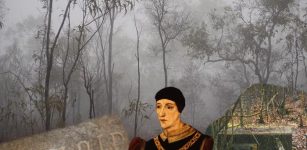 Cursed Dudleytown – What Really Happened In America’s Village Of The Damned In Connecticut
Featured Stories | May 27, 2020
Cursed Dudleytown – What Really Happened In America’s Village Of The Damned In Connecticut
Featured Stories | May 27, 2020 -
 Mystery Of The Knights Templar – Did A Secret Ancient Meeting Determine The Real Purpose Of The Christian Knights? Part 1
Ancient Mysteries | Aug 20, 2019
Mystery Of The Knights Templar – Did A Secret Ancient Meeting Determine The Real Purpose Of The Christian Knights? Part 1
Ancient Mysteries | Aug 20, 2019 -
 Ancient Volcanic Eruption Was Not A Catalyst To Early Homo Sapiens Cultural Innovations – Study finds
Archaeology | Jul 8, 2024
Ancient Volcanic Eruption Was Not A Catalyst To Early Homo Sapiens Cultural Innovations – Study finds
Archaeology | Jul 8, 2024 -
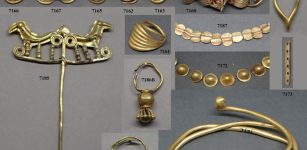 Mystery Of The Gold From Troy, Poliochni And Ur Solved!
Archaeology | Dec 2, 2022
Mystery Of The Gold From Troy, Poliochni And Ur Solved!
Archaeology | Dec 2, 2022 -
 ‘Flower Burial’ And Shanidar Cave With Neanderthal Remains Who Lived 70,000 Years Ago
Archaeology | Feb 19, 2020
‘Flower Burial’ And Shanidar Cave With Neanderthal Remains Who Lived 70,000 Years Ago
Archaeology | Feb 19, 2020 -
 Mystery Of The Scientist Who ‘Saw’ A Fire From Miles Away
Featured Stories | Nov 1, 2020
Mystery Of The Scientist Who ‘Saw’ A Fire From Miles Away
Featured Stories | Nov 1, 2020 -
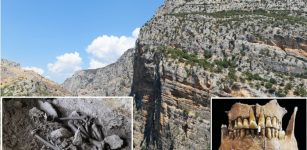 Unusual Neolithic Burial From Grotta Di Pietra Sant’ Angelo Puzzles Archaeologists
Featured Stories | Jan 15, 2024
Unusual Neolithic Burial From Grotta Di Pietra Sant’ Angelo Puzzles Archaeologists
Featured Stories | Jan 15, 2024 -
 Native Americans And European Legends Tell Peculiar Beings From The Sky Still Live On The Earth
Ancient Mysteries | May 16, 2018
Native Americans And European Legends Tell Peculiar Beings From The Sky Still Live On The Earth
Ancient Mysteries | May 16, 2018 -
 Broken Pebbles In Arene Candide Cave Shed New Light On Ancient Burial Practices
Archaeology | Mar 7, 2017
Broken Pebbles In Arene Candide Cave Shed New Light On Ancient Burial Practices
Archaeology | Mar 7, 2017 -
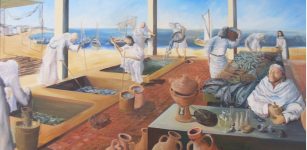 Mediterranean Hunter-Gatherers Relied On Marine Resources More Than Previously Thought
Archaeology | Feb 22, 2023
Mediterranean Hunter-Gatherers Relied On Marine Resources More Than Previously Thought
Archaeology | Feb 22, 2023 -
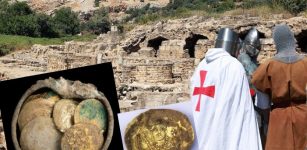 Treasure Hoard Of Rare Gold Coins From The Crusader Conquest Discovered In Caesarea, Israel
Archaeology | Dec 8, 2020
Treasure Hoard Of Rare Gold Coins From The Crusader Conquest Discovered In Caesarea, Israel
Archaeology | Dec 8, 2020 -
 Archaeologists Solve A 1,000-Year-Old Mystery Mentioned In Norse Sagas
Featured Stories | Oct 10, 2024
Archaeologists Solve A 1,000-Year-Old Mystery Mentioned In Norse Sagas
Featured Stories | Oct 10, 2024 -
 Graveyards Of Ancient British And French Giants Revealed In Old Documents And Journals
Ancient Mysteries | Jul 4, 2020
Graveyards Of Ancient British And French Giants Revealed In Old Documents And Journals
Ancient Mysteries | Jul 4, 2020 -
 Evidence Of Yue – Ancient Chinese Criminal Punishment Found At Sanmenxia City
Archaeology | May 17, 2024
Evidence Of Yue – Ancient Chinese Criminal Punishment Found At Sanmenxia City
Archaeology | May 17, 2024 -
 How Did Ancient Romans Grow Their Gardens?
Ancient History Facts | May 25, 2018
How Did Ancient Romans Grow Their Gardens?
Ancient History Facts | May 25, 2018 -
 Were Owl-Shaped Plaques Children’s Toys In Copper Age?
Archaeology | Dec 1, 2022
Were Owl-Shaped Plaques Children’s Toys In Copper Age?
Archaeology | Dec 1, 2022 -
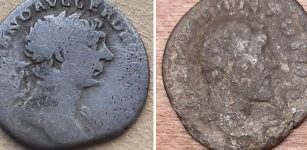 Unique Discovery – 2,000-Year-Old Roman Coins Found On Gotska Sandön In Sweden
Archaeology | Apr 13, 2023
Unique Discovery – 2,000-Year-Old Roman Coins Found On Gotska Sandön In Sweden
Archaeology | Apr 13, 2023 -
 On This Day In History: Bolsheviks Executed Aleksandr Kolchak, A Navy Officer And Explorer Of The Arctic – On Feb 7, 1920
News | Feb 7, 2017
On This Day In History: Bolsheviks Executed Aleksandr Kolchak, A Navy Officer And Explorer Of The Arctic – On Feb 7, 1920
News | Feb 7, 2017 -
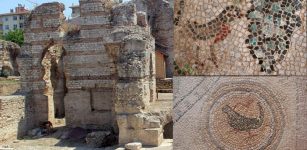 Beautiful Zeugma-Like Mosaics Unearthed In Sinop Province, Northern Turkey
Archaeology | Oct 17, 2020
Beautiful Zeugma-Like Mosaics Unearthed In Sinop Province, Northern Turkey
Archaeology | Oct 17, 2020
